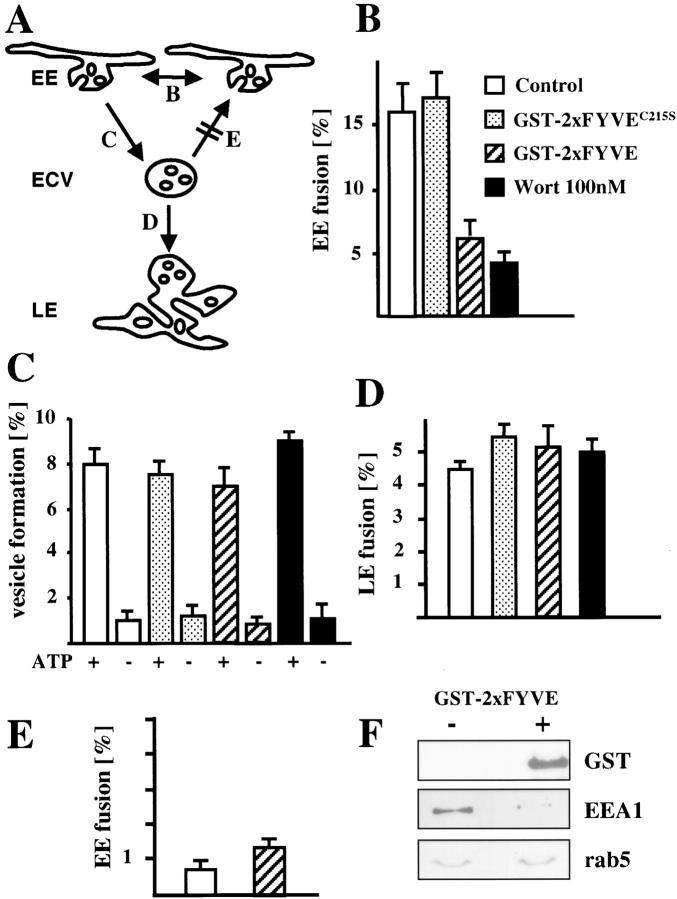Figure 4.
PI3P signaling is not necessary for ECV biogenesis. (A) The different transport steps that were studied in vitro are shown with reference to the corresponding panels: homotypic early endosome (EE) fusion (B), ECV biogenesis (C), and ECV fusion with late endosomes (LE) (D). ECVs lose the capacity to fuse with EEs in vitro (E) and acquire the capacity to fuse with LEs (D). (B–F) The homotypic fusion of early endosomes (B), the formation of ECVs (C), and the fusion of ECVs formed in vitro with late (D) or early (E) endosomes were measured in vitro in the absence (control) or presence of 100 nM wortmannin, 3 μg/100 μg endosomal protein GST-2xFYVE or C215S mutant, and ATP, as indicated. Note the relatively high efficiency of ECV fusion with late (D) but not early (E) endosomes, when compared with the efficiency of ECV formation (C). (F) Early endosomes were incubated with or without GST-2xFYVE and analyzed by Western blotting using antibodies against the indicated proteins.

